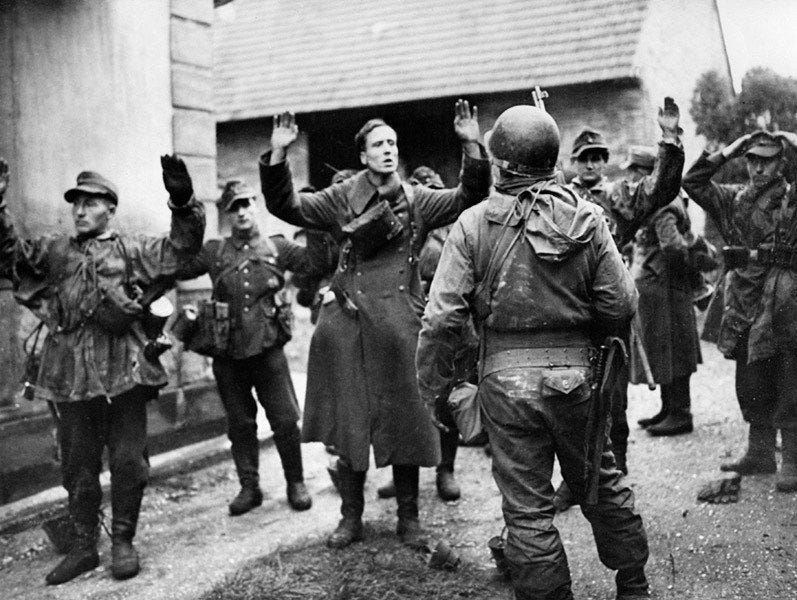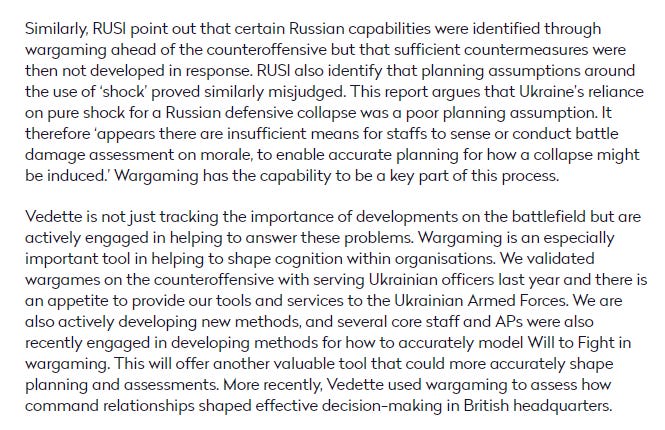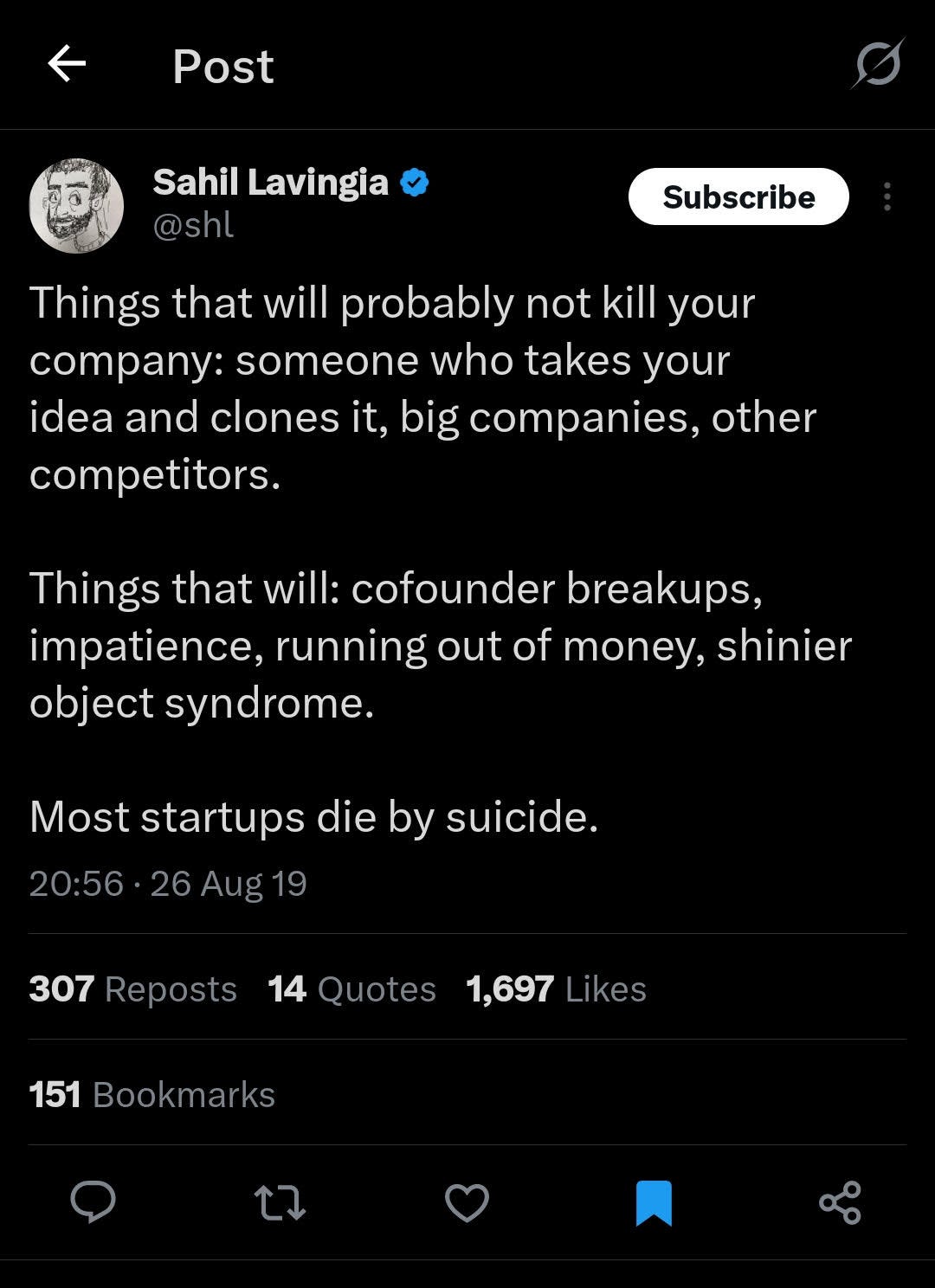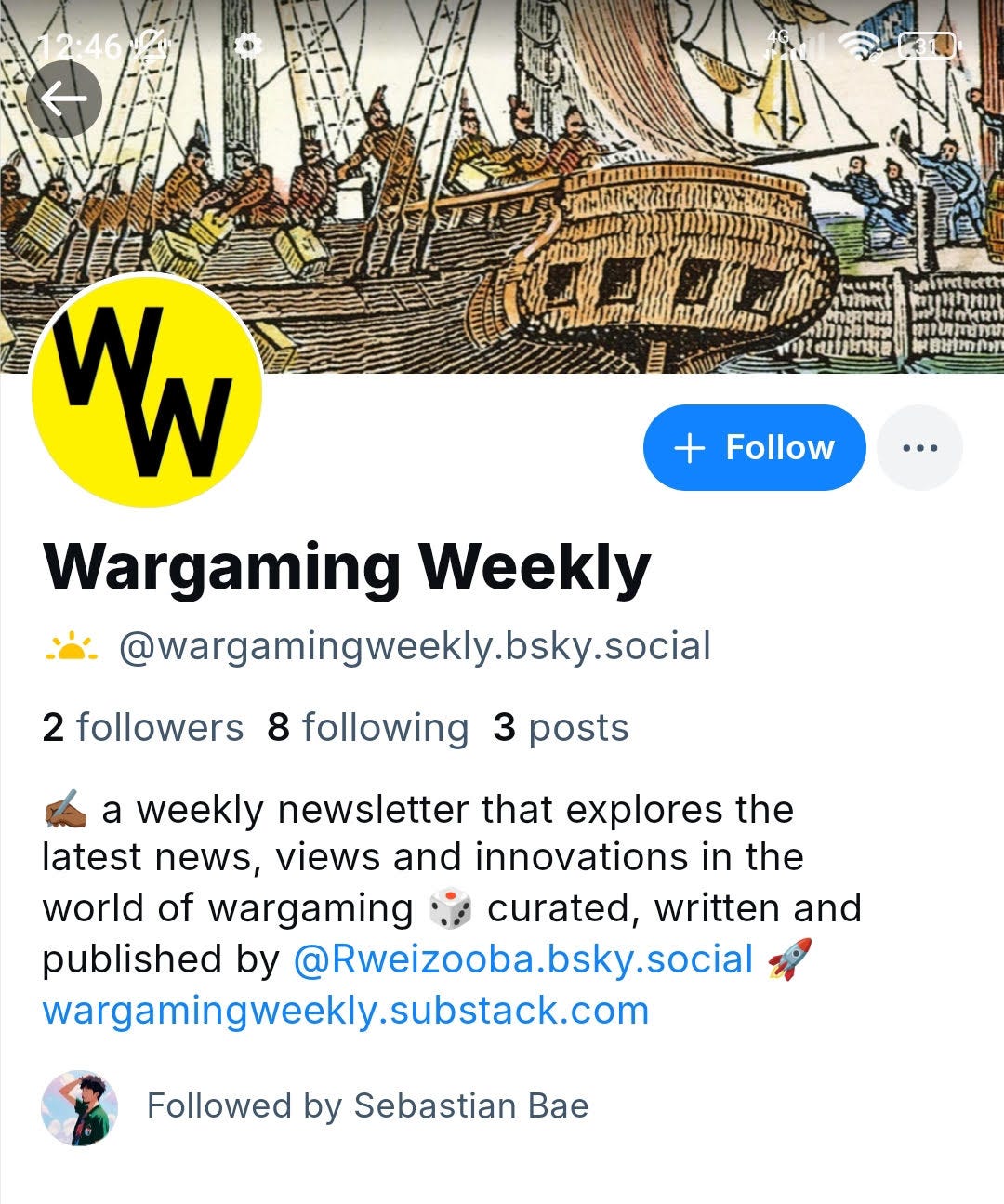Wargaming Weekly #026: How should we model morale in wargaming?
24 game mechanic ideas on how to represent will to fight in a wargame
The ongoing Russo-Ukrainian war has seen expert predictions of collapse for both sides that didn’t come true.
First, it was the Ukrainians – everyone thought they would fold immediately upon being invaded by Russia… they didn’t. Then, it was the Russians, especially around the time of Prigozhin’s saga – everyone swore they were about to tuck their tails and scuttle back across the border… they didn’t.
Why is morale so hard to determine? Well, for starters, it’s both heavily shrouded and heavily influenced by propaganda from both sides of any armed conflict. Plus, measuring morale often entails dealing with very messy things like religion and ethnicity that can be hard to grasp on the outside looking in.
Fortunately, professional wargame designers such as those over at Vedette Consulting, home of the Battlegroup Wargaming System (BGWS) that’s now being adopted by the British Army, are already thinking seriously about the implications of using wargames that don’t account for morale.
I recently revisited this Georgetown University Wargaming Society (GUWS) webinar on determining morale in wargames.
It was given back in 2022 by Brianna Proceviat and David Redpath from the Canadian Joint Warfare Centre and they highlighted how absurd it is to have units in wargames fighting to the last man when that rarely ever happens in real combat.
So this time, as I followed the presentation along, I paused intermittently to put my armchair general hat on and brainstorm specific game mechanic ideas that could be used to model morale/will to fight in a wargame, based on the insights that Brianna and David shared.
What determines morale in the first place?
First, they shared 13 factors that affect morale under 4 categories:
1. Logisticial and environmental factors
· Combat supplies such as food, ammunition, fuel, CASEVAC
Idea #1: Logistical stress accumulator: Units lose morale points each turn spent below their minimum supply thresholds
Idea #2: Emergency supply expenditure: Players can burn extra supply points to prevent morale loss, creating resource trade-offs
· Weather
Idea #3: Weather condition cards: Drawn each turn, with specific morale modifiers for different unit types and/or nationalities
· Terrain
Idea #4: Terrain comfort ratings: Each unit type has preferred terrain, gaining morale bonuses in favorable environments
2. Military factors
· Training and professionalism
Idea #5: Training quality tiers: Units start with training levels (elite/regular/militia) that set base morale resistance to negative events
· Unit history
Idea #6: Battle honors system: Units gain permanent morale bonuses from major victories, basically simulating combat veteran status
· Effective command and control
Idea #7: Command efficiency ratings: Officers provide morale bonuses within their command radius, varying by leader quality
· Leadership
Idea #8: Leader personality cards: Different commander types provide unique morale bonuses/penalties to their units
3. Psychological factors
· Successes and losses
Idea #9: Objective completion rewards: Each completed mission objective gives immediate morale boost to participating units in the next turn while a failed mission reduces morale
· Casualties (in a given timespan)
Idea #10: Casualty rate thresholds: Units lose morale when losses exceed certain percentages within a given number of turns
· Mental and physical conditioning
Idea #11: Combat fatigue effects: Exponentially increasing morale penalties in each turn as the game progresses, simulating how prolonged engagement without rest wears soldiers down.
4. National factors
· Patriotism and public opinion
Idea #12: Home front support track: National morale affects combat performance for all units of that faction, modified by media events and civilian casualties
· Cohesion
Idea #13: Language/cultural compatibility: Allied units from same cultural background provide mutual morale bonuses
· Propaganda
Idea #14: Information warfare tracks: Players allocate resources to propaganda campaigns affecting enemy morale
How to include morale in your wargame
Then, Brianna and David highlighted three ways to depict morale in a wargame:
1. Effect on units
Morale affects combat performance, it can be a real force multiplier.
Idea #15: Morale-based dice modifiers: High morale adds +1 to attack rolls, low morale subtracts -1
2. Effect on tactics and considerations
Morale can force a DIME strategy and act as a distractor from the kinetic battle as more attention and resources are devoted to draining the enemy’s will to fight and public support or more attention is devoted to keeping your own and allies’ morale high.
Idea #16: Action point allocation: Players must spend AP on morale-boosting activities vs. combat operations
Idea #17: Victory condition weighting: Morale objectives worth significant VP, forcing strategic decisions where players secretly allocate resources between kinetic and morale warfare each turn
3. Effect on resources
Morale can increase or decrease available resources in a given faction e.g. Western support for Ukraine was buoyed by Ukrainian display of high morale at start of Russia’s 2022 invasion.
Idea #18: Dynamic reinforcement schedules: High morale threshold that triggers additional unit spawns or extra supply deliveries
Building on the above, here are five more considerations that I think can influence how a designer accounts for morale in a wargame:
1. Cascading morale effects
Model how morale spreads between units through proximity. A heroic last stand by one unit could inspire nearby forces, while a rout could trigger panic in adjacent formations, creating chain reactions across the battlefield.
Idea #19: Adjacency influence: Unit morale automatically affects neighboring units each turn
2. Time and endurance factors
Morale influences how long units can sustain operations. Well-motivated forces might fight effectively for extended periods, maintain better discipline during long campaigns, or recover faster from setbacks, while low-morale units suffer from increased desertion, equipment neglect, and combat fatigue.
Idea #20: Operational tempo: Morale affects maximum actions per turn or movement allowances
3. Intelligence and information warfare
Morale affects both the gathering and interpretation of intelligence. High-morale forces might take more initiative in reconnaissance and communicate more effectively, while demoralized units could misreport situations, fail to spot opportunities, or become susceptible to enemy disinformation campaigns.
Idea #21: Fog-of-war modification: High-morale units can perform additional reconnaissance actions per turn and gain bonuses to intelligence-gathering dice rolls
4. Civilian and infrastructure interactions
Morale influences how military forces interact with civilian populations and infrastructure. High-morale troops might maintain better discipline, win "hearts and minds," and protect critical infrastructure, while demoralized forces could engage in looting, alienate locals, or fail to secure important facilities, affecting long-term strategic objectives.
Idea #22: Zone control benefits: High morale units generate more resources from occupied territories
5. Command authority and orders
Morale affects how units respond to orders from higher command. High-morale forces execute orders quickly and may even exceed expectations through initiative, while low-morale units might delay implementation, misinterpret instructions, or require additional command resources for enforcement and monitoring.
Idea #23: Command range modification: High morale extends officer command radius, low morale reduces it
Idea #24: Initiative system: Morale determines turn order or number of command tokens available
Of course it wouldn’t make sense to try and use all 24 of these mechanics on one wargame but I think combining 2 or 3 of them with other mechanics for combat, movement, logistics, intelligence and deception could create a very interesting and pretty realistic model.
Lastly… what’s that over there in the Business Corner?
I want to experiment with a new Business Corner segment where I hope to round out every newsletter with a business topic that’s either related to the wargaming topic discussed in the main body or that has simply caught my interest recently.
This week is the perfect time to start because of the link between morale/will to fight and building a successful startup. As succinctly explained here by Sahil Lavingia (founder of Gumroad), startups rarely die of homicide but rather mostly of suicide.
I couldn’t agree more. In fact, if I was to design a wargame about building a startup, it would definitely have a morale tracker!
Yours in hex,
Rwizi.
PS: Wargaming Weekly is now on Bluesky, please hit that “Follow” button next time you’re there!
…
SUPPORT MY NEWSLETTER!
If you enjoy this newsletter, you can support me in any one of the following three super-specific ways:
1. Leave a comment below! (Punching a good hole in any of the facts or arguments shared above.)
2. Book a wargame play-date with me! (I’m available to play either Twilight Struggle or Fort Sumter via the Playdek mobile apps. In fact, I bet you $20 you can’t beat me in either of these two games, take your pick! Please DM me via X or LinkedIn to sync.)
3. Give me a warm intro to your friend at a16z! (Preferably someone who’s on either the a16z speedrun team or the a16z Games team. I’m looking for brutal feedback on a speedrun application my startup made last year: once again, please DM me via X or LinkedIn to sync.)
ABOUT THE AUTHOR:
Wargaming Weekly is curated, written and published by Rwizi Rweizooba Ainomugisha, a freelance writer, game designer and startup entrepreneur. Rwizi currently serves as Co-Founder, Co-CEO and Chief Strategy Officer (CSO) at Lupiiya Books - the social finance app that is gamifying the fundraising process for young African entrepreneurs. Wargaming Weekly is a curiosity chronicle of Rwizi’s exploration of the wargaming world… for the love of games in general, for the desire to contribute to the growth of wargaming in particular as a discipline, and lastly, for the hope of finding cutting-edge game design innovations to bring back with him to the startup world.






